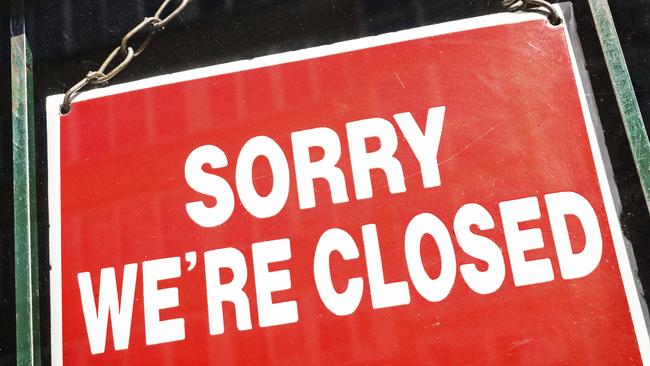Insolvencies in 2024 expected to continue to track above pre-covid levels
The year has started “with a bang” for insolvency specialists with expectations the number of company collapses will continue to track above pre-covid levels.

Business owners are being forced to chase sales instead of margins as 2024 begins with expectations that insolvencies will continue to surpass pre-covid peaks.
The latest Credit Risk Insights report by Alares shows there were 909 insolvencies in December – 30 per cent above pre-covid levels – as court recoveries and winding-up applications continued their upwards trajectory.
Insolvency and business turnaround specialists Jirsch Sutherland partner Andrew Spring said 2024 has started “with a bang”.
“Usually January is a quiet month due to the holiday season and court closures, but we’ve rolled into 2024 with insolvency inquiries and appointments coming thick and fast,” he said.
“We have many active appointments and strong demand for our services – and we’re likely to see a lot more, as creditors’ attitudes are likely to begin to change.
“Since the pandemic, empathy and compassion have been front and centre for a lot of creditors when assessing financially distressed debtors.
“However, because the spike in insolvencies impacts creditors’ businesses, we anticipate seeing a more robust and active credit collection environment.”

The latest Credit Risk Insights report by Alares shows that Australia’s insolvency numbers in 2023 surpassed the pre-covid peak in 2018 and 2019 and, in December 2023, court recoveries and winding-up applications continued their upwards trajectory.
According statistics compiled by Alares for the first half of the 2024 financial year there were 5497 insolvencies, well over pre-covid levels.
In June 2023 the ATO revealed that tax debts were just over $50bn, of which $45bn of collectable debt was owed by all businesses and small businesses continues to be over-represented, owing more than $33bn.
This has seen the ATO ramp up its tax collection and in the six months to December 31 it initiated 583 winding up, 558 money owed and 131 bankruptcy court actions.
As higher interest rates continue to impact on the serviceability of loans, the big four banks initiated 808 court actions in the six months to the end of December, 2023.
Mr Spring said financial pressure has seen too many businesses forced to chase sales instead of margins and “robbing the future to pay for the past”.
“This isn’t an uncommon pitfall for businesses, but the current market is forcing even experienced operators into making this mistake,” he said.
“We often say that ‘chasing sales is vanity, chasing profit is sanity’.
“However, in the current environment we know some business owners are feeling the pressure to maintain price points or even discount to maintain top line performance, while the costs of doing business continues to grow, strangling and suppressing their profit margin.”

Mr Spring pointed to a current e-commerce retailer he is trading, whose director cites margin squeeze and the inability to play catch up as a key reason for the company’s financial distress and the need to go into voluntary administration.
“The director has told me that he felt trapped in a cycle of loss-making decisions simply to keep the lights on. He couldn’t see the forest for the trees – and that’s when he knew he needed help,” he said.
“Margin squeeze is tricky to come back from; it can ultimately turn what was a profitable business into an unprofitable one.”
Alares director Patrick Schweizer said January was historically a low month for insolvencies.
“It won’t be until February or March before we get a clearer idea whether the trend from the end of 2023 continues into 2024”.
“Outstanding tax obligations remain a key challenge for Australian businesses, with the ATO committed to collecting on overdue tax debts,” he said.
“In December, the ATO remained active in the court, continuing its push to recover unpaid tax debts.”
The construction sector has borne the brunt taking up most about 27 per cent of insolvencies.
However Australian Institute of Quantity Surveyors vice president Fiona Doherty said there was cause for some optimism in 2024.
She said economic growth, population increases, a large pipeline of construction work and stabilised material costs should benefit the sector.
However, labour costs are expected to continue to add pricing pressure in regions where the capacity exceeds demand.
“Despite the rain, the construction sector is looking a lot more positive. There are challenges but the economy is well equipped to meet them and if all the stars align we should be in for a more positive year,” Ms Doherty said.
“I think we are seeing a bit of sunshine, despite the rain, and we are seeing some light at the end of the tunnel as we get back to a more normal cycle.”







To join the conversation, please log in. Don't have an account? Register
Join the conversation, you are commenting as Logout